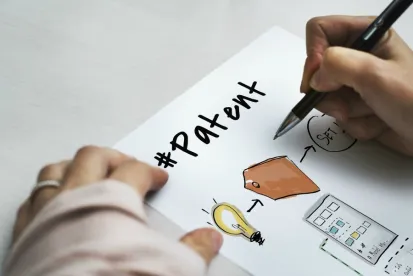Intellectual property assets are the lifeblood of many businesses today. No employer wants to see those assets walk out the door when an employee leaves. Employee invention assignment agreements are one crucial tool for protecting intellectual property, but the laws governing them contain traps for the unwary. If the agreement is too narrow or ambiguous, it may allow inventions to slip away. Further, if the agreement fails to include certain provisions, it may be invalid in certain states.
The two most significant forms of employee-created intellectual property are patentable inventions and copyrightable works. The default rules for these creations are polar opposites. While copyrights are presumptively property of the employer, inventions are presumptively property of the employee. Invention assignment agreements are therefore necessary to ensure the employer obtains all of the rights to the greatest possible scope of its employees’ creations.
At least nine states have enacted statutes governing employee invention assignment agreements. Seven of those states – California, Delaware, Illinois, Kansas, Minnesota, North Carolina, and Washington – have nearly identical requirements. For example, California Labor Code § 2870 provides:
Any provision in an employment agreement which provides that an employee shall assign, or offer to assign, any of his or her rights in an invention to his or her employer shall not apply to an invention that the employee developed entirely on his or her own time without using the employer’s equipment, supplies, facilities, or trade secret information except for those inventions that either:
(1) Relate at the time of conception or reduction to practice of the invention to the employer’s business, or actual or demonstrably anticipated research or development of the employer; or
(2) Result from any work performed by the employee for the employer.
The California statute and others also typically require the employer to notify the employee that the invention assignment agreement does not apply to an invention that does not qualify as the employer’s invention under the statute.
Making matters even more complicated, Nevada and Utah have unique variants of these statutes. Nevada Stat. § 600.500 makes patentable inventions presumptively the property of the employer. Utah Code § 34-39-1, et seq., by contrast, creates clear lines between “employment inventions” that are owned by the employer and inventions created on an employee’s own time that are not.
As a general rule, invention assignment agreements should be drafted to include language that mirrors the requirements of the seven states identified above because that will ensure the agreement is enforceable in those states and most others. Variations can be drafted for Nevada, Utah and any other states that may enact unique restrictions.
Agreements should also be drafted to encompass the widest range of intellectual property possible. In addition to inventions, conceptions, discoveries, improvements, and original works of authorship, the agreement should include an assignment of “know-how” and “ideas” learned or created by the employee while employed.



 />i
/>i

